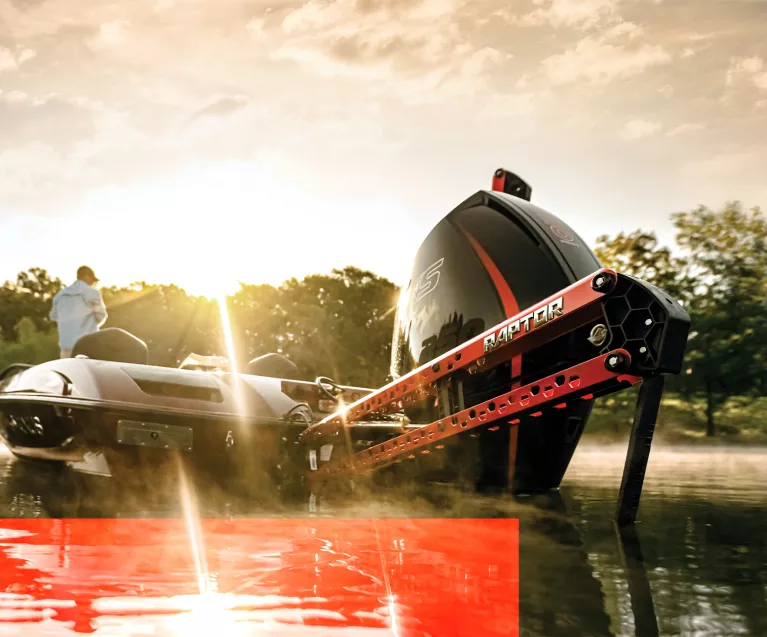When it comes to kayak trolling motors, the voltage can make or break your day on the water. Choosing the right voltage for your kayak motor is not just about speed; it's about efficiency, power, and ensuring a great fishing or touring experience. So, let's dive into the electrifying world of kayak motors and find the perfect voltage for your aquatic escapades.
What's the Deal with Kayak Motor Voltages?

Kayak motor voltages are crucial because they determine the power and efficiency of your motor. Think of it as choosing between a scooter and a motorcycle; both can get you where you need to go, but their power and usage differ significantly.
12V Motors: The Lightweight Contenders
Ideal for smaller kayaks under 16 feet.
Perfect for calm waters with minimal current.
Easier on the wallet and simpler to set up with a single battery.
24V Motors: The Heavy-Duty Powerhouses
Suited for larger kayaks or when facing strong currents and winds.
Offers more thrust and longer runtime, thanks to the dual-battery setup.
A bit heavier on the pocketbook but worth the investment for serious kayakers.
How Do I Choose the Right Voltage for My Kayak?

When selecting the right voltage for your kayak trolling motor, there are several factors to consider to ensure optimal performance and safety.
1. Understanding Trolling Motor Voltage
Trolling motors come in various voltage ratings, typically 12V, 24V, and 36V. The voltage of a trolling motor dictates its power output and endurance. A higher voltage means more thrust and longer battery life but also requires a heavier and more expensive battery setup.
2. Assessing Kayak Size and Weight
The size and weight of your kayak play a crucial role in determining the necessary voltage. For smaller kayaks, a 12V motor may suffice, providing enough thrust for calm waters and short trips. Larger kayaks, especially those loaded with gear, may require 24V or even 36V motors to maintain efficient movement.
3. Considering Water Conditions
Your typical paddling environment affects your voltage choice. Calm lakes require less power, whereas coastal waters with strong currents or winds might demand a higher voltage for better control and sustained speed.
4. Evaluating Battery Space and Weight
Higher voltage motors require multiple batteries, which can add significant weight and take up space. It's essential to balance the power needs with the physical limitations of your kayak's design.
5. Estimating Usage Duration
Consider how long you'll be on the water. Longer trips necessitate more battery capacity, which might mean opting for a higher voltage system to reduce the frequency of battery swaps or recharges.
6. Balancing Cost and Performance
Higher voltage systems are typically more expensive. Assess whether the performance benefits justify the additional cost based on your specific needs and usage patterns.
7. Safety Considerations
Ensure that your electrical setup, including the motor, batteries, and wiring, adheres to safety standards to prevent accidents or damage to your equipment.
By carefully evaluating these factors, you can choose the right voltage for your kayak trolling motor that balances performance, cost, and safety, providing a pleasant and efficient fishing or touring experience. Remember to consult with a professional if you're uncertain about the technical aspects of your trolling motor setup.
What Are the Perks of Picking a 24V Over a 12V Motor?

Here's the scoop: a 24V motor doesn't necessarily mean faster speeds, but it does mean more torque. That's like having a stronger friend to help you push your car out of the mud – more muscle, less struggle.
Enhanced Thrust: A 24V motor provides greater thrust, measured in pounds (lbs), which translates to more power to propel your kayak. This is especially beneficial when you're dealing with larger and heavier kayaks or challenging conditions like strong currents and winds.
Efficiency: The efficiency of a 24V motor is superior because it requires less current to produce the same power output as a 12V motor. This means that for a given mechanical load, a 24V motor can achieve the desired performance using fewer amps, which leads to less battery drain and longer use on the water.
Extended Runtime: Thanks to the dual-battery configuration, a 24V motor offers a longer runtime compared to a 12V motor. This is crucial for anglers or explorers who plan to spend extended periods on the water without the need to recharge.
Power Consumption: A 24V system draws fewer amps, which not only improves runtime but also reduces the strain on batteries, potentially extending their overall lifespan.
Can I Get By with a 12V Motor?
Absolutely! If you're a casual kayaker sticking to peaceful waters, a 12V motor is your trusty sidekick. It's like having a reliable friend who's always ready for a chill day out – no fuss, no muss. Here are some perks to consider:
Simplicity: A 12V system is simpler to use and maintain since it only requires one battery. This makes it easier to set up and less cumbersome to transport.
Weight and Space: With only one battery needed, a 12V motor takes up less space and adds less weight to your kayak, which can be an important consideration for smaller kayaks or for those who prioritize ease of transport.
Conclusion: Voltage for Victory
Choosing between a 12V and 24V kayak motor boils down to your needs, kayak size, and the waters you'll conquer. Remember, it's not about the speed; it's about the journey and the stories you'll tell. So, pick the voltage that suits your adventure, and let's make some waves!
Now, go forth and electrify your kayak journey with the right voltage, and may the fish be ever in your favor!


